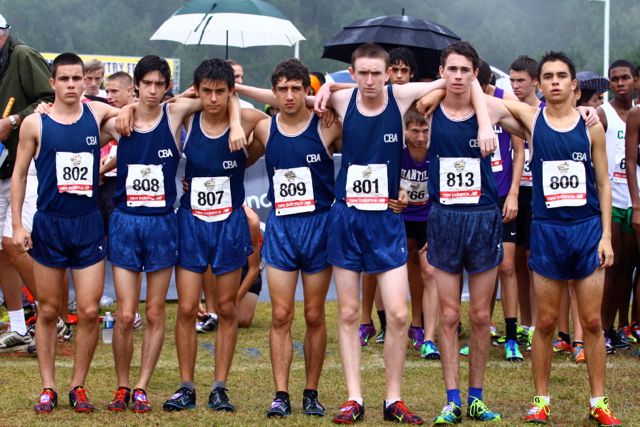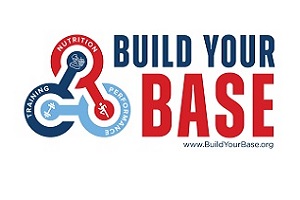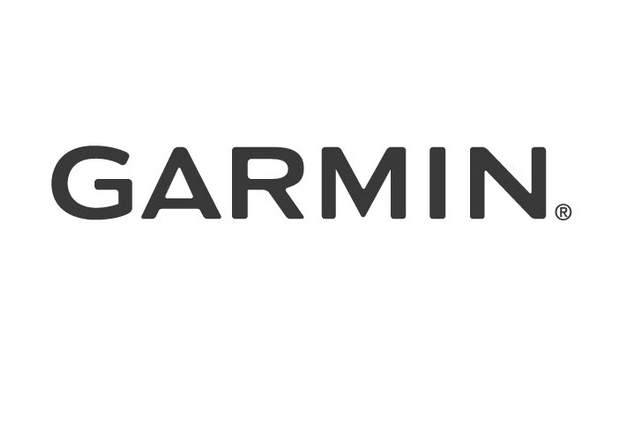CBA Cross-Country… What Makes Them So Good?
MIDDLETOWN, N.J. - “We’ve had good guys and great runners here before,” Tom Heath readily acknowledges.
“But this is the most talented group of kids we’ve ever had.
“These guys right here, right now, they're very, very good.”
This isn’t exactly a late-breaking news development to those keeping tabs on the national scholastic cross country scene.
The rest of America - beyond the Lincroft section of Middletown Township, New Jersey, where Heath has guided the runners of Christian Brothers Academy since 1971 - obviously knows this to be a familiar story.
After all, the Heath-coached CBA Colts ran off with the 2011 Nike Cross Nationals boys team crown at Portland Meadows Racetrack, setting a five-man team record of 15:58.59, and return key members of that national championship team.
Off and running in brilliant fashion thus far into the 2012 season - with major team triumphs at the Bowdoin Park, N.Y. Classic and the Great American Festival in Cary, North Carolina, heading into Saturday's Manhattan College Invitational at New York’s Van Cortlandt Park, CBA is solidly entrenched as top choice to regain its Nike Cross Nationals crown at Portland on Saturday, Dec.1.
But how and why?
Tradition is a big part of it. That's number one.
 CBA, founded by a group of devoted laymen - one of them Dr. George Sheehan, the famed “Running Doc,” who saw the need for another Catholic high school in rapidly growing Monmouth County - opened its doors to its first students in September 1959, and was soon off and running, literally and figuratively.
CBA, founded by a group of devoted laymen - one of them Dr. George Sheehan, the famed “Running Doc,” who saw the need for another Catholic high school in rapidly growing Monmouth County - opened its doors to its first students in September 1959, and was soon off and running, literally and figuratively.
Established on the grounds of the former Whitney Greentree Stables, once the training grounds of leading thoroughbreds, the spacious 157-acre campus is ideal for running, complete with its own cross country course, a former barn that became winter training headquarters, and a standard outdoor track and field facility.
The former home of champion four-legged racers soon became home to outstanding teen-age racers. The long blue line of CBA runners now stretches back over a half-century and includes winners on every level.
At last glance, in addition to the 2011 Nike Cross Nationals crown, the young men of CBA had won 23 New Jersey Meet of Champions, 28 Shore Conference and 42 Monmouth County team crowns. And its dual meet streak of 322 consecutive wins - dating back to 1971 - is a national record that’s only rarely been threatened with interruption. .
Tom Heath is a big part of it. That's number two.
Championship individuals and teams emerged virtually from Day One, but the program really took off once Heath, himself a 1965 CBA graduate and former sprinter, returned to his alma mater to teach math and coach young men.
“I ran 10.3 in the 100 yards and around 23.6 in the 220 at CBA,” he remembers. “In states, the best I placed was third or fifth. I’m remembering third, but it’s probably fifth.”
He had the briefest of collegiate track careers at Montclair State.
“I never saw the coach for a month, so then I stopped. I never got to see him. I figured it wasn’t that important to him, so it shouldn’t be important to me.”
“That, pretty much, was it for me as an athlete.”
However, the Montclair State grad’s return to CBA was fortuitous for all concerned.
“The day before I came over (to teach at his alma mater), a track coach who had been a math teacher, had quit. Still there were (coaches) Terry Broderick and Dave Hyland, so I became the third guy," said Heath.
“The next year, they (Broderick and Hyland) both left, so by the start of my second year, they had a track coach who knew absolutely nothing.”
And who was that?
“Me,” said Heath. “That was 1971. I learned by making a lot of mistakes, by doing an incredible number of stupid things, like not listening to the kids when they were hurt, like racing them when they were injured. The things that neophytes would do, I did them.
“Undertrained, overtrained, whatever I should have done, I did the opposite. It was a great learning experience.”
“When Dave and Terry left, they left me copious notes, but I wasn’t able to figure out what it all actually meant.
Still, it didn’t take long for Heath and his athletes to catch on.
“By 1972, we were pretty good,” he said. “That’s because we had guys like Bill Huntley,
Bobby Gibbs and Ken McDaniels. We were close to being the best team in the area, right behind the strong Middletown teams; sometimes they beat us, sometimes we beat them.
“After that group (led by Huntley, who'd go on to star at Penn) left, I continued to make mistakes.
"So, after a while I said ‘ this is crazy’ and that’s when we started working significantly harder, It took me about four years to finally figure out things.”
“It took me a while to see that the front guys were important, more so than the back guys. Initially, I was coaching all of them to the ability of the fourth and fifth runners.”
CBA won its first state crown, with a group led by seniors Ron Gale, Steve Kustera, Jack Lawrence, Sean O’Brien, Tex Twyman and Pete Casagrande, in 1976.
In 1979, led by such runners as Marc Librizzi, Kevin Brandon, Ed Hillman and Steve Apostolacus, CBA won its first N.J. State all-groups title, against the best of the public and parochial school ranks.
Soon after, the Colts were really off to the races,
The archives of CBA cross country are carefully maintained and fill several fing cabinets, amid much memorabilia in all categories, in the building that serves as XC HQ on the Colts’ campus. Decking the walls are the championship plaques won all over the nation. But they soon outgrew available school wall space - and were presented to team members as personal remembrances.
The school's 24-page summary document is insightful and all-inclusive, with listings of top CBA team and individual performances at many of the Northeast’s, and the nation’s, leading courses, as well as its own campus three-mile circuit.
The last team to beat CBA in a dual meet was Monmouth County neighbor Raritan, back in 1969. Raritan’s Rockets had some quality runners of their own - led by brothers Bobby and Warren Gordon and Mel Ullmeyer - and it was a clearcut verdict.
“It was a loop course around their own home course,” said Heath. “No tricks about it, they were just better than us. We couldn’t touch them.”
St. John Vianney and Colts Neck, other Monmouth County neighbors, and both coached by Jim Schlentz, have been the only local teams over the years to mount a serious challenge to the CBA streak that’s now reached 322.
This year, for instance, Colts Neck runners went 1-2 in the dual, but 11 CBA men trooped in behind them.
While CBA rarely runs these dual meets at full strength, Heath considers the dual meet schedule a vital part of his team’s season.
“When some other schools run these big meets (multi-school events scored as quadruple/quintuple duals) it may be fine for them...but to me it is totally-totally-totally contradictory to trying to improve the younger kids, who’ll only get better by racing.
“The more they race, the faster they race, the better off they’ll be, “
And it’s those younger kids who eventually start challenging the vets...and thus keep the entire program rolling right along.
The Freshman Run (1.3 miles) early each September is another CBA ritual.
“It shows the kids who didn’t really think they were runners that they are runners,” said Heath. “Then we have to convince them to come out for the team. And once they’re on the team, we keep telling them that ‘what you’re doing is important.'
“Every single runner who came through our program ran that Freshman Run,” said Heath. “Nobody gets cut. We keep them all.”
Even though it’s building a great underclass base that will keep CBA in the top ranks of the sport for years to come, it’s been the senior leadership of Jack Boyle, Billy Bragg and Aaron Liberatore that has propelled the 2012 Colts.
"Boyle is going to Columbia; Liberatore, he's a convert from soccer, he's going to Duke, and Bragg's considering either Clemson or Providence," said Heath.
With juniors Mike McClemens, Tommy Rooney and Fran Bogan running hard on their heels, there's solid top-flight depth. At least five of the top group are sub 9:15 3200-meter men.
"All these guys, they're working as hard as they possibly can work," said Heath.
"We all have a goal in mind and that is to win Nationals,” said Bragg. "We know we have to work hard as we can to achieve that and if not it won’t happen. We all know that. If we don’t we’ll come up short."
With an array of national publications and websites as measuring rods, it's hard not to notice the growing national acclaim.
"Still, we try not to pay too much attention to other teams," said Bragg. "We just try to be the best that we, as CBA, can be."
Yes, the one-for-all, all-for-once essence of XC as a team sport.
Boyle may be the most honored of the CBA runners - as N.J. state Meet of Champions 3200-meter winner last spring.
Yet he tells you - "this is not about individual success, it’s about team success. Whatever we accomplish, we know we’ll have to do it as a team.
Liberatore looks at it this way: "Our success comes from everything we do together. We all have a goal in mind.
"At CBA, it's always about building year to year. We’ve learned from last year’s team and they learned from teams before them. The program’s just getting better and better.
"We're definitely under pressure. We all want to keep that tradition alive, to keep doing what previous teams have achieved."
Now, Chris Bennett is a big part of it, too, as assistant coach. That's number three.
Bennnett, a 1994 CBA graduate, went on to a stellar track career at the University of North Carolina, then headed west to train with the Stanford-based Farm Team of world-class post-graduate runners. Along the way, he cut his 1500-meter best to 3:43.93 (four-minute mile pace) and absorbed the coaching expertise of such notables as Frank Gagliano and Vin Lananna.
He also pulled down a high-bracket salary as a West Coast private client financial advisor but couldn’t resist the opportunity to return to CBA when a history teacher’s opening emerged six years ago.
He shrugged off the huge pay cut and demotion in his tax bracket to leap at the chance to return to his alma mater as a teacher and coach, as well as organizer of summer running camps and a myriad of other programs.
“Now, I’m just the pretty face and Chris does all the hard work,” jokes Heath.
The difference in their own track careers is stark. Heath's was minimal. Bennett was an elite runner.
"So Chris, he obviously knows what it takes to run at that level," said Heath. "He’s able to show them all the drills, all the stretches, all the things they’ll need, the nuts and bolts things, the experiences that will help them out dramatically.
"Me, I'm really cautious about a lot of things.."
“This is my dream job,” said Bennett. "Being back at CBA and coaching all these kids, that’s as good as it gets.
“Tom and I, we sometimes argue over things, but we always wind up in the middle." And that seems to be the 2012 Colts' winning formula
Some expert analysts of the scholastic XC scene have already said that this 2012 CBA team may be one of the greatest teams - ever.
“Well, to those people, I say they have the potential to be all of those things,” responds Bennett. "Which means they also have the potential to be none of those things.
“It’s all going to be what happens between right now and that finish line in Portland. That will decide how these conversations end up.
“That's the fun of it all. There’s nothing wrong with being straightforward.
"We’re incredibly talented and incredibly hard-working.
" When it’s all said and done, though, it's about what kind of standard you 're setting for yourself first and foremost, and then for those who come after you.
"That’s terrific and that’s one of the great joys of the sport, being able to have these virtual races against the runners of the past, over the same courses we’re running now.
“Absolutely, they have the potential to do many great things.
"And now it’s our job, and the kids’ job, to follow through on as many of those as possible,"
Early-season time trials put the 2012 CBA team well ahead of the 2011 team's pace.
They came on the Lincroft home course, at Bowdoin Park, and in Cary,
"Let's just wait a while to say any more," said Heath.
"We'll find out how good we are soon enough."
Photo courtesy of Chris Coleman




